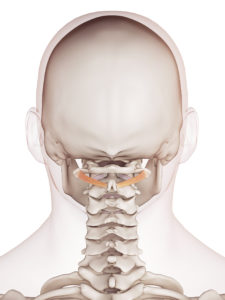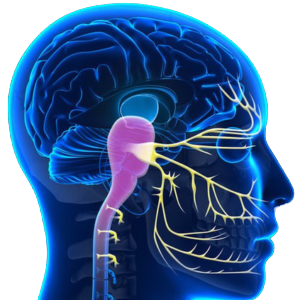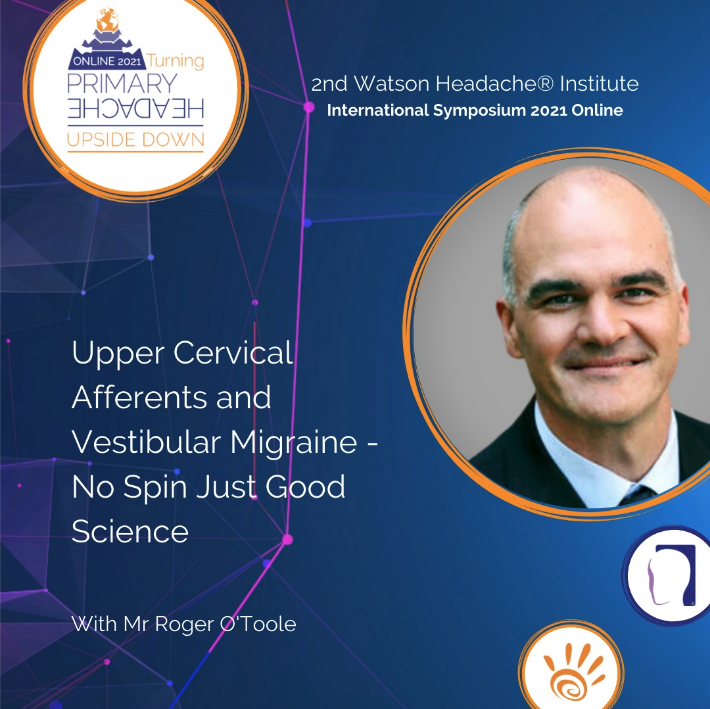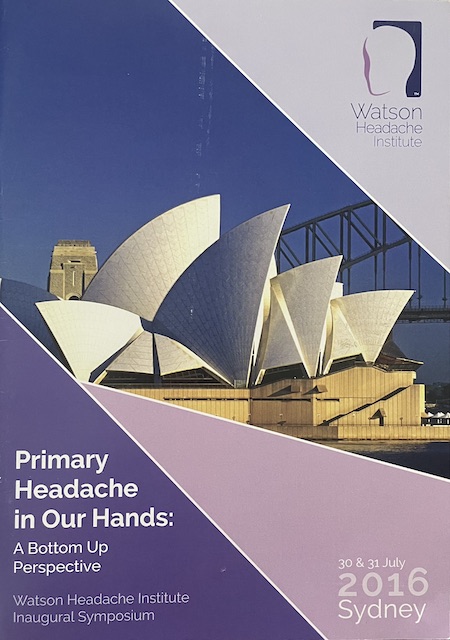Watson Headache® Approach
The Watson Headache® Approach is a manual approach to identifying the source of dysfunction in the neck (upper cervical spine), and determining its relevance to headache and related disorders. Developed by Australian physiotherapist Dr Dean Watson, this 'hands on' approach is based on physiotherapy manual techniques, but framed in the context of neurological sensitivity. This sees the emphasis placed on sensitivity and symptom referral patterns, rather than the sometimes forceful 'stretch and strengthen' approaches that the majority of other manual therapies employ.
The Watson Headache® Approach does not involve clicking, cracking, or manipulation (high velocity thrust) techniques.
Some of the conditions this technique is best applied to are listed on the right hand side of the page.
Dean Watson began to develop what would become the Watson Headache® Approach after recognising a previously overlooked clinical pattern in patients with post-traumatic headache, whose neck injuries had clearly caused headaches that fit a migraine pattern. Dean would go on to refine his hypothesis, hone the techniques, and most importantly, subject the Watson Headache® Approach to scientific scrutiny by completing a PhD and submitting publications for peer review.
The Watson Headache® Approach is the only manual therapy approach that has been scientifically validated, that has demonstrated an ability to change the underlying problem affecting migraine and headache sufferers - a sensitised brainstem.

The Watson Headache® Approach is now taught and practiced in over 25 countries, and is recognised intentionally for providing unparalleled diagnostic accuracy in identifying small faults at the top of the neck (upper cervical spine) that create a protective response from the deep muscles.
The sub-occipital muscles (obliquus capitis inferior, obliquus capitis superior, rectus capitis major/minor) are the most sensitive muscles in the body. Sensitivity can be measured by looking at the density of muscle spindles (sensory nerve unit within the muscle). Our lower limb and back muscles have approximately 1-2 muscle spindles per gram of tissue. The muscles in our hands (considered to be sensitive for great dexterity) have 15-20 spindles per gram of tissue. The muscles in the front of our spine, that give us 80% of the load capacity of our trunk have around 50 spindles per gran of tissue.
Rectus capitis has 98. Obliquus capitis superior has 160. Obliquus capitis inferior has an amazing 250 muscle spindles per gram of tissue.
This information is critical to our balance and movement coordination as the neck provides a vital positional link of the head with the rest of the body. Hence, the nerve signals coming directly from the sub-occipital muscles feed directly into brain areas responsible for dizziness, vertigo, nausea and vomiting, visual disturbances and blood pressure, but also implicated in cortical spreading depression (migraine aura), sleep dysfunction and anxiety. The stress the muscle creates directly impacts on the joints in the top of the neck between the skull (occiput) and C1, C1-C2, and C2-C3.

The C1, C2 and C3 spinal nerves converge or mix with the trigeminal nerve coming from the head and face, onto relay nerves, in an area described anatomically as the trigeminal nucleus caudalis or the trigemino-cervical complex or TCC.
The first publication from Dean Watson's PhD (Watson and Drummond) demonstrated that examination of the neck could reproduce familiar head pain, in an overwhelming majority of migraineurs (95%) and tension-type headache sufferers (100%).
In other words this convergence of nerves in the TCC could allow neck signals to be 'misinterpreted' as headache signals. Neck dysfunction has been relegated to being a 'symptom' of migraine/headache yet here quite clearly the neck can be the cause.
The TCC has been proven to be 'overactive' or sensitised in between headache and migraine attacks across a number of disorders including migraine (and migraine with aura, menstrual migraine), tension-type headache, cluster headache, post traumatic headache and cervicogenic headache, by measurement of a reflex that protects the eye - the nociceptive blink reflex.
This constant overactivity demonstrated the TCC is a 'powder keg' awaiting another stressor or trigger to 'blow up the system', resulting in an episode commencing.
The second publication from Dean Watson's PhD showed that skilful application of the Watson Headache® Approach produces referral of head pain in migraineurs, and able to decrease the sensitivity of the brainstem (normalise the nociceptive blink reflex).
The finding that reproduction and resolution of familiar head pain in migraine using the Watson Headache® Approach decreases the underlying sensitivity that sits in the TCC is groundbreaking. The powder keg reduces in size (or disappears completely), making the system less susceptible to 'blowing up'.
Melbourne Headache Centre and the Watson Headache® Approach
Roger O'Toole created the Melbourne Headache Centre after being inspired by the results he was seeing in his general practice following the Level I foundation course with Dean Watson. Soon after completing the Level II Advanced course the Melbourne Headache Centre was born, and aims to help fulfil part of the vision of Dean Watson, that every person suffering from a primary headache disorder should have access to a highly skilled examination of the upper cervical spine, using techniques developed specifically for the sensitivity we see with these disorders. Roger O'Toole was amongst the first group of therapists in the world to be examined and become a Watson Headache® Certified Practitioner, and subsequently completed a week observing with Dean Watson in the Watson Headache® Clinic in Adelaide.
Techniques often employed by manual therapists are wonderful for dealing with stiff muscles and tight joints, but can often be ineffective or too forceful for brainstem sensitivity. The Watson Headache® Approach is guided by sensitivity rather than stiffness, and does not involved cracking or manipulation of the neck.
As Mr Romain Giop PhD candidate, University of Leige, Belgium describes:
“Many would say that the Watson Headache ® Approach is just a manual approach - it is not. To put a light on the the Watson Headache® Approach this is not just a manual concept. You have all the basic pieces with the Watson Headache® Approach…...really, really you can do a lot of things with that - it really is a complete concept.’”
The requirement for a 'highly skilled' assessment is not taken lightly by Roger O'Toole and the staff at the Melbourne Headache Centre, as they often are able to provide assistance to sufferers who have had unsuccessful treatment with the Watson Headache® Approach. Experience matters, and with the Melbourne Headache Centre you have access to the most experienced group of clinicians (aside from Dean Watson) in the world.
Research involving the Watson Headache® Approach
In 2016 a group of 17 international experts in neck-based headache management conducted a Delphi study to determine the most useful physical examination tests used by physiotherapists for patients with headache. From a group of 26 tests, a key pillar of the Watson Headache® Approach, reproduction and resolution of familiar head pain was included in the final 11.
These 11 tests were used by a German research group in 2017 to stratify migraine patients based on dynamic pain provocation and in 2018 to examine musculoskeletal dysfunction in migraine patients.
In 2017 the combination of local pain on the neck and reproduction of familiar head pain was able to 'select' 88% of migraine sufferers compared to control subjects (specificity 0.85).
The follow up research in 2018 using the 11 'Delphi tests', 93% of migraine sufferers tested positive on at least three out of six tests. Reproduction and resolution of familiar head pain from the Watson Headache® Approach was one of those final six tests.
Peer-reviewed publications involving the Watson Headache® Approach
2023
Manual cervical therapy and vestibular migraine: A case series
O’Toole, R., & Watson, D. (2023). Manual cervical therapy and vestibular migraine: A case series. Health Open Research, 5, 12.
The improvement that coincided with the intervention including MCT was rapid, observable and sustained. This suggests that the upper cervical spine could be a therapeutic target in VM and may have implications for future research into the pathogenesis of VM.
2018
Musculoskeletal dysfunction in migraine patients
Luedtke, K., Starke, W., & May, A. (2018). Musculoskeletal dysfunction in migraine patients. Cephalalgia, 38(5), 865–875
The follow up research in 2018 using the 11 'Delphi tests', 93% of migraine sufferers tested positive on at least three out of six tests. Reproduction and resolution of familiar head pain from the Watson Headache® Approach was one of those final six tests.
2018
Assessing the feasibility of mobilisation of C0-C3 cervical segments to reduce headache in migraineurs
Davidson, I., Crooks, K., Newington, L., Pilling, M., & Todd, C. (2018). Assessing the feasibility of mobilisation of C0-C3 cervical segments to reduce headache in migraineurs. International Journal of Therapy and Rehabilitation, 25(8), 382–394
This article demonstrates how important experience is in using the Watson Headache Approach. The three therapists involved had attended a 2-day course, or roughly 15 hours of training, and one used an artificial thumb device during testing. This inexperience and use of a device unlikely to provide good palpation feedback may account for the the unacceptably high dropout rate of 66% (67/102).
Despite this a positive trend emerged in a significant reduction in headache days, headache duration, reduction in migraine hours and medication use over time, and being sustained beyond the 3 month follow up.
2017
Stratifying migraine patients based on dynamic pain provocation over the upper cervical spine
Luedtke, K., & May, A. (2017). Stratifying migraine patients based on dynamic pain provocation over the upper cervical spine. The Journal of Headache and Pain, 18(1), 97–97. https://doi.org/10.1186/s10194-017-0808-0
The combination of reproduction and resolution of familiar head pain from the Watson Headache® Approach and local pain on the neck was able to 'select' 88% of migraine sufferers compared to control subjects (specificity 0.85).
2016
International consensus on the most useful physical examination tests used by physiotherapists for patients with headache: A Delphi study
Luedtke et al (2016). International consensus on the most useful physical examination tests used by physiotherapists for patients with headache: A Delphi study. Manual Therapy, 23, 17–24
An international panel of 17 experts considered experts in the role of the upper cervical spine and headache presentations, selected the Watson Headache® Approach's reproduction and resolution of familiar head pain as one of only eleven important tests to confirm the role of the upper cervical spine in headache and migraine.
2016
The Role of the Trigemino Cervical Complex in Chronic Whiplash Associated Headache: A Cross Sectional Study
Watson, D. H., & Drummond, P. D. (2016). The Role of the Trigemino Cervical Complex in Chronic Whiplash Associated Headache: A Cross Sectional Study. Headache, 56(6), 961–975. https://doi.org/10.1111/head.12805
Subjects with Chronic Whiplash Associated Headache (CWAH) demonstrate a tension-type headache or migraine phenotype, with photophobia and hyperalgesia. Therefore subjects, who have sustained a neck injury (whiplash) commonly demonstrate features consistent with primary headache. Exclusion of other diagnosis is a key pillar of the international headache society diagnostic criteria, a skilful examination of the neck must precede formal diagnosis of a primary headache disorder, or all other options have not sufficiently been excluded.
2014
Cervical referral of head pain in migraineurs: Effects on the nociceptive blink reflex
Watson, D. H., & Drummond, P. D. (2014). Cervical referral of head pain in migraineurs: Effects on the nociceptive blink reflex. Headache, 54(6), 1035–1045
This key piece of research demonstrates that the Watson Headache Approach is able to change the underlying sensitisation present in primary headache, a sensitised brainstem, by altering and normalising the nociceptive blink reflex. Reflexes are not modified by placebo. No other manual therapy approach has demonstrated this ability, and it sets the Watson Headache Approach apart.
2012
Head pain referral during examination of the neck in migraine and tension-type headache
Watson, D. H., & Drummond, P. D. (2012). Head pain referral during examination of the neck in migraine and tension-type headache. Headache, 52(8), 1226–1235
This article demonstrates the ability to assess sensitisation of the trigeminocervical complex using a manual therapy technique. The reproduction and resolution of familiar head pain is a key pillar of the manual therapy technique developed by Dean Watson and referred to as the Watson Headache Approach, and has been adopted by international consensus as an important test to identify the role of the upper cervical spine in headache and migraine.
Watson Headache® Institute Symposia
All images reproduced under licence Watson Headache® Institute. Copyright © Watson Headache® Institute 2016 - 2021, under special user agreement with Roger O'Toole due to his role as a presenter in the conferences.
2021
2nd Watson Headache® Institute International Symposium 2021 Online

This article demonstrates the ability to assess sensitisation of the trigeminocervical complex using a manual therapy technique. The reproduction and resolution of familiar head pain is a key pillar of the manual therapy technique developed by Dean Watson and referred to as the Watson Headache Approach, and is the aspect of the technique that has been reused in further research to test the role of the upper cervical spine in headache and migraine.
Who is better than Roger, O'Toole, having managed many patients with vestibular migraine, to present neurophysiological evidence of the role of cervical afferents and its manual treatment in the (successful) management of those affected by this syndrome? Thank you for another paradigm-changing presentation, Roger. One not to be missed. Cheers Dean
Dr Dean Watson - founder of the Watson Headache® Approach
2020
Watson Headache® Institute International Symposium Turning Primary Headache Upside Down 2020 Online

Watson Headache® Institute Inaugural International Symposium - Turning Primary Headache Upside Down. Keynote presenters: Mr Mark Jones; Dr Roger Kerry; Dr Julie Walters PhD; Dr Riccardo Rosa; Dr Dean Watson PhD; Mr Romain Giop; Ms Hedwig van der Meer; Dr Gianluca Coppola; Mr Roger O'Toole; Dr Claudia Clerici; Mr Rob Wallis; Dr Matteo Castaldo; Ms Helen Tufui; Mr Fernando Ruiz; Ms Trina Morris; Dr Cherubino Di Lorenzo;
Roger, probably the most internationally experienced manual therapist managing patients with CVS, will present the neurophysiological evidence for the role of cervical afferents, and the role of manual cervical intervention in the (successful) management of those afflicted by this syndrome.
Dr Dean Watson, founder of the Watson Headache® Approach
2018
Turning Primary Headache Upside Down Watson Headache® Institute International Symposium 2018
Watson Headache Institute - Inaugural International Symposium: Turning Primary Headache Upside Down. Keynote speakers; Professor Fabrizio Benedetti; Ms Trina Morris; Dr Dean Watson; Dr Jo Nijs; Dr Didrik Sopler; Mr Alessandro Aina; Dr Cherubino Di Lorenzo; Dr Kerstin Luedtke; Dr Gianluca Coppola;
2017

Primary Headache in Our Hands: Challenging Perspectives. Keynote Speakers; Dr Ross Walker; Ms Annette Tonkin; Professor Darren Rivett; Dr Peter Osmotherly; Alan Pearce PhD; Dr David Samra
2016

Primary Headache in our Hands: A Bottom Up Perspective. Presentations; Mr Chris Fawcett; Ms Trina Morris; Ms Maria Aguila; Mr Dean Watson; Dr Peter Osmotherly; Dr Julie Walters; Ms Annette Tonkin; Ms Pam Reynolds; Mr Scott Cook; Dr Shelley Keating; Dr Lisa Elkington; Mr Dean Watson; Mr Roger O'Toole; Mr Chris Fawcett; Mr Rodney Rossetto; Mr Russell Mackenzie; Ms Sally Wride; Ms PollyAnne van Rookhuitjzen.
